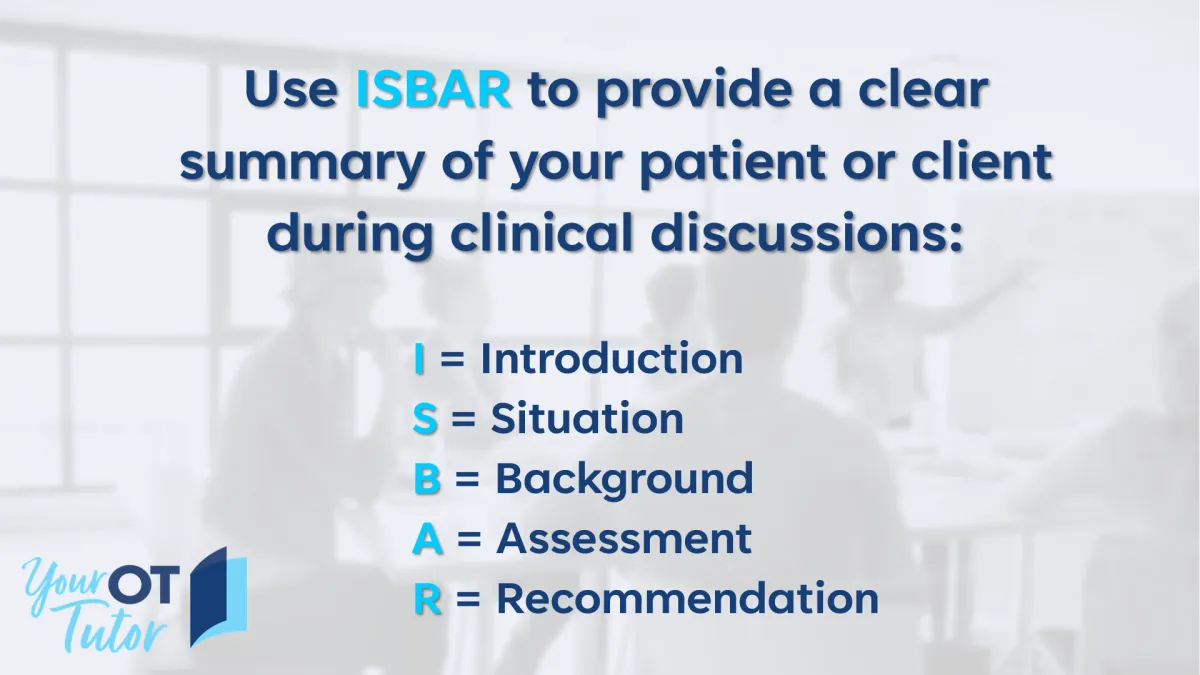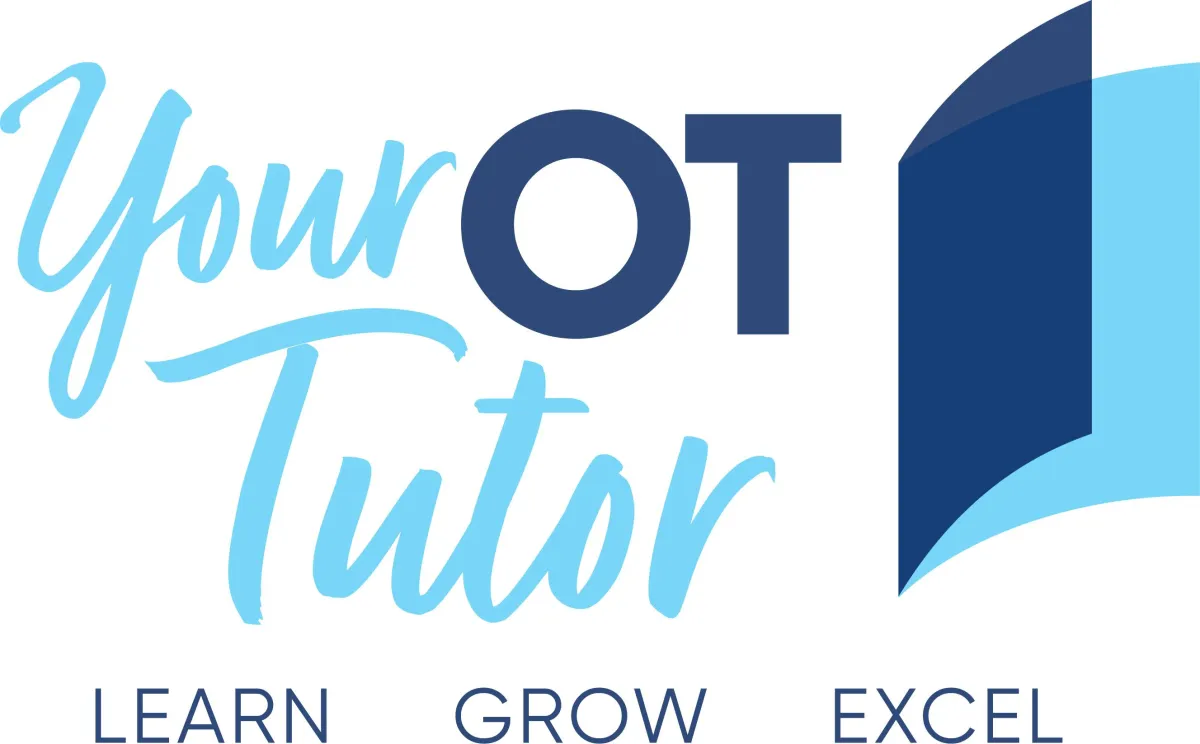THE YOUR OT TUTOR BLOG
Articles on important topics for occupational therapists...

HOW USING THE ISBAR FRAMEWORK CAN GIVE YOU CLARITY AND CONFIDENCE WHEN PROVIDING A CLINICAL HANDOVER.
Do you feel nervous or tense whenever you need to discuss one of your patients or clients with another health professional? Do you stumble over your words, repeat information or seem to go around in circles to the point where the other clinician is a little lost? Then this blog is for you!
Providing a summary of your client in a clear and concise manner can be trickier than it seems, but when time is limited, or if you’re a new grad or student and the process is new to you, having a structured approach can be very helpful. One approach is to use the ISBAR framework. The ISBAR framework is endorsed by the World Health Organisation and is a widely used approach in a variety of clinical contexts.
But what does ISBAR stand for? It stands for:
- I = Introduction – Introduce yourself, your role, and one line that says why you need to have this conversation, including the name of the patient or client you need to discuss.
- S = Situation – What is the issue you need to discuss (in a nutshell!)?
- B = Background – What background information or context does the other person need to know to be able to engage in the conversation?
- A = Assessment – What is your understanding of the issue? What investigations have you already done, or what questions have you already asked?
- R = Recommendations – What do you think needs to happen next? If you are calling to ask for help, your question now goes here!
But what does this actually look like in practice? Here’s a short example where you are a new grad OT calling your OT supervisor to ask for help with a client:
- I = Hi Sally it’s Clare from the Ipswich office and I was wondering if you had some time to discuss a client of mine, Mrs W?
- S = I’m working with Mrs W and she isn’t agreeable to the recommendations I’ve made to increase her safety when she’s showering.
- B = Mrs W has a diagnosis of MS. She lives alone and currently stands up to shower in her shower recess, but she states she nearly falls or is too exhausted to shower.
- A = I observed her shower transfers and she is very unsteady. I also noticed she became very fatigued and needed a seated rest after giving me a short tour of her house, so physical fatigue is definitely an issue for her. There currently isn’t any AT in the bathroom but when I made a few suggestions about some equipment that may make things easier, she was reluctant to make any changes.
- R = I’ve discussed the risks of continuing to shower without AT and she understands; I’ve also shown her pictures of lots of AT options including stools and chairs, but she still isn’t agreeable to trial any AT. Do you have any other suggestions for things I could try?
This format can also be used for other scenarios, with the level of detail provided in each section expanded as needed. For example, it could be used to write up a written handover of your clients before going on annual leave, or to guide how you might present your recommendations in a family meeting or case conference.
It is also important to remember that while you can use this as a written guide, if clinical communication is something that makes you nervous, then PRACTICE is the best thing! Say it in your head or to your supervisor, or reach out to find out more about ‘Your OT Tutor’s’ one-on-one support services.
If you found this blog helpful, then sign-up to the Your OT Tutor mailing list to be notified when new resources, courses, and blogs are available.






